
In this resource, there are 21 moon phases activities and resources including a few printables, a song, activities, and more.
- Subject:
- Science
- Material Type:
- Activity/Lab
- Provider:
- Teach Junkie
- Author:
- Teach Junkie
- Date Added:
- 02/26/2019

In this resource, there are 21 moon phases activities and resources including a few printables, a song, activities, and more.

Students will use a model of the solar system to demonstrate rotation, revolution, kepler’s laws, Newton's laws, precession, nutation, seasons or tides.

This lesson will help students visualize barycenter and the relationship between the sun and the earth. Students will use a solar system model to demonstrate barycenter and see the effects of adding other planets into the mix.
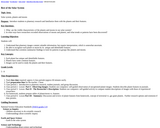
Students view images of the solar system (planets and moons) and record observations. They will also generate a list of questions they would like to find information about and conduct research to gather answers. Findings can be submitted in written form or presented orally to the class.
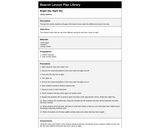
In this activity, students will make observations and understand that the sky looks different during the day than it does at night.

In this lesson, students will learn about the moon. Students will learn why they can see the moon sometimes during the day and at night. Students will look at the lunar calendar to see the phases of the moon. Students can also take a virtual tour of the moon.

Students use a variety of fruits to construct a scale model of the Moon, Earth, and Sun. After determining the correct sizes and distances for their models, they remove the Moon and consider what it would be like if the Moon was not part of our solar system.
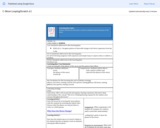
Students will discuss and create a scratch jr animation about the phases of the moon.
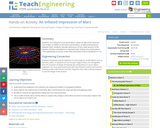
Students use scaling from real-world data to obtain an idea of the immense size of Mars in relation to the Earth and the Moon, as well as the distances between them. Students calculate dimensions of the scaled versions of the planets, and then use balloons to represent their relative sizes and locations.
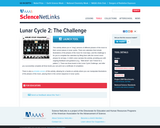
In this interactive resource, students will click and drag pictures of different phases of the moon to complete a calendar of lunar cycles. Narration in the interactive provides ongoing feedback and guidance to the students as they work to complete the patterns. There is also a printable version of this activity, allowing for a hands-on activity where students can physically manipulate illustrations of the phases of the moon, placing them in the correct sequence in lunar cycles.
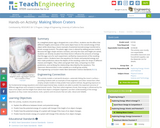
As a weighted plastic egg is dropped into a tub of flour, students see the effect that different heights and masses of the same object have on the overall energy of that object while observing a classic example of potential (stored) energy transferred to kinetic energy (motion). The plastic egg's mass is altered by adding pennies inside it. Because the egg's shape remains constant, and only the mass and height are varied, students can directly visualize how these factors influence the amounts of energy that the eggs carry for each experiment, verified by measurement of the resulting impact craters. Students learn the equations for kinetic and potential energy and then make predictions about the depths of the resulting craters for drops of different masses and heights. They collect and graph their data, comparing it to their predictions, and verifying the relationships described by the equations. This classroom demonstration is also suitable as a small group activity.

In this lesson, students will read 'The Moon Book' by Gail Gibbons. Each page, the teacher will stop and talk with the students about what they are learning about the moon. After the students read the book, additional actvities are provided in the lesson including arts and crafts, oreo moons, and much more.
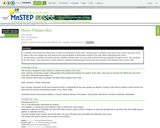
Students will view the different phases of the moon by viewing images in a "moon phases box." Note: This activity requires the students, acting as the Earth, to revolve around a stationary moon. This is of course the opposite of what actually occurs. Some students may be aware that the moon revolves around the Earth, others may not, so you may want to clarify the actual movement.

This readers theater script is based on the historic conversations from the moon in July 1969.
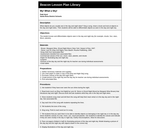
In this lesson, students will review what objects are found in the day and night skies through text, images, discussion, and an interactive song. Students will verbally identify objects in each sky as assessment.

This is the educator's guide for a set of activities that teach students about humans' endeavors to return to the moon. The emphasis is for students to understand that engineers must "imagine and plan" before they begin to build and experiment. Each activity features objectives, a list of materials, educator information, procedures, and student worksheets. Students should work in teams to complete the activities. Note: Activities do not align to all objectives that are listed; specific activities align to specific objectives.

This is the educator's guide for a set of activities that teach students about humans' endeavors to return to the moon. The emphasis is for students to understand that engineers must "imagine and plan" before they begin to build and experiment. Each activity features objectives, a list of materials, educator information, procedures, and student worksheets. Students should work in teams to complete the activities. Note: Activities do not align to all objectives that are listed; specific activities align to specific objectives.

This is the educator's guide for a set of activities that teach students about humans' endeavors to return to the moon. The emphasis is for students to understand that engineers must "imagine and plan" before they begin to build and experiment. Each activity features objectives, a list of materials, educator information, procedures, and student worksheets. Students should work in teams to complete the activities. Note: Activities do not align to all objectives that are listed; specific activities align to specific objectives.
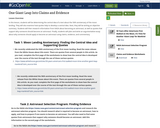
In this lesson, students will be determining the central idea of a text about the 50th anniversary of the moon landing. They will also examine how quotes help to develop a central idea. Next, they will be writing an objective summary. Students will then research information from NASA about becoming an astronaut, as well as quotes that support why someone should become an astronaut. Finally, students will plan and write an argumentative essay about why someone should apply to become an astronaut using claims, evidence, and commentary.
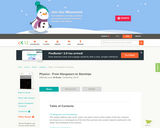
An introduction to astronomy written with a historical perspective.